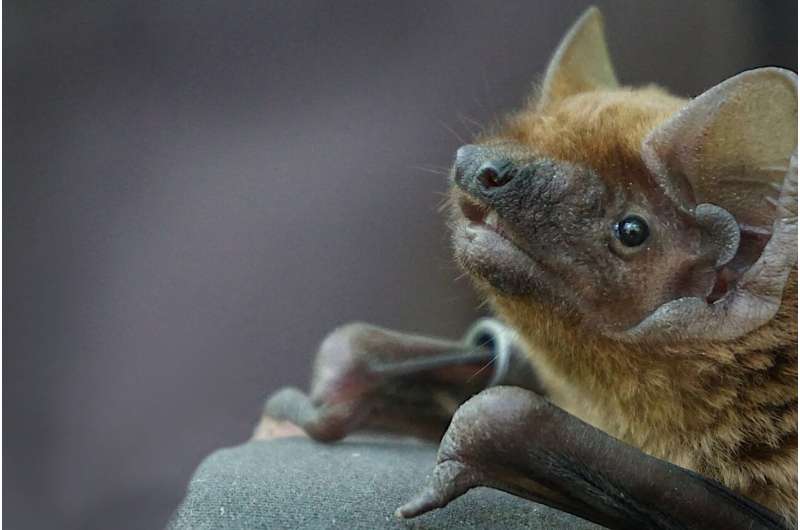This article has been reviewed according to Science X's editorial process and policies. Editors have highlighted the following attributes while ensuring the content's credibility:
fact-checked
peer-reviewed publication
trusted source
proofread
Much effort, little prey: Poor foraging success drives bats away from cities

While some wildlife species thrive well in cities, it's harder for large, insectivorous bat species to find enough food. To get their fill, city-dwelling common noctules (Nyctalus noctula) have to hunt longer than their rural counterparts and yet they catch fewer insects. While rural bats hunt together, their urban counterparts regularly forage alone. These findings, published in the journal Global Change Biology, are the results of a new investigation led by PD Dr. Christian Voigt and Dr. Laura Stidsholt from the Leibniz Institute for Zoo and Wildlife Research (Leibniz-IZW).
The research team equipped common noctules, a bat weighing around 30 grams, with small sensor loggers in the urban area of Berlin and in a rural area in northeastern Germany. This allowed them to record and analyze the bats' foraging efforts, the presence of conspecifics during foraging and hunting success in urban and rural environments.
The results were consistent with the scientists' predictions: Although common noctules hunted similar-sized prey in both environments, they captured significantly fewer prey per flight time in the city and also a smaller total number of insects than their conspecifics in the countryside. In addition, they flew to higher altitudes to catch prey—bats in the city therefore catch fewer prey and have a higher energy expenditure while hunting insects than bats in the countryside. According to the scientists, common noctules in the city could compensate for their lower energy intake by lowering their body temperature when resting.
"Many bats live in urban areas but not all of them are doing equally well," says Voigt, head of the Department of Evolutionary Ecology at the Leibniz-IZW. For larger species in particular, food supply is rather poor, due to the high degree of surface sealing because of roads, parking lots and buildings, says Voigt.
All European bats are insectivores that hunt in the evening or at night. In cities, they find their prey in confined areas such as parks and cemeteries. According to first author Stidsholt, a Villum International postdoctoral researcher at the Leibniz-IZW, cities appear to be less attractive for larger bats such as the common noctule. "In the city, common noctules were also less social, hunting less frequently with conspecifics. Group hunting is probably unnecessary in the city, as it is easy for an urban bat to recognize which green spaces contain prey insects. In the countryside, they need the support of their conspecifics."
Most bat species have a high energy requirement owing to their high metabolism and energy-intensive mode of locomotion. To minimize this, especially in times of food shortage, bats go into a dormant state called torpor. In doing so, bats reduce their metabolism and body temperature and thus their energy consumption considerably.
It is possible that larger species such as the common noctule use this method in urban areas to maintain a positive energy balance. However, the energy-saving torpor also has negative consequences, for example for females of the common noctule during pregnancy and for the development of young animals, as growth is also slowed down at lower body temperatures.
Urbanization has a significant impact on wildlife and ecosystems. Although a few species adapt to urban environments, the majority of wildlife species avoid heavily urbanized areas, leading to a general decline in biodiversity, the scientists say. The situation of large bats in cities is a good example of this, as the Leibniz-IZW's scientific investigation shows. Habitats with many insects are crucial for the protection of large bats in urban environments, the research team emphasizes.
"This study helps us understand why some species thrive well in cities and others not and may inform protection strategies to improve the co-existence of human and bats," conclude the authors. "This is important since bats are essential in many ecosystems across the globe, but their species and numbers in decline."
More information: Laura Stidsholt et al, Low foraging rates drive large insectivorous bats away from urban areas, Global Change Biology (2023). DOI: 10.1111/gcb.17063
Journal information: Global Change Biology
Provided by Forschungsverbund Berlin e.V. (FVB)


















